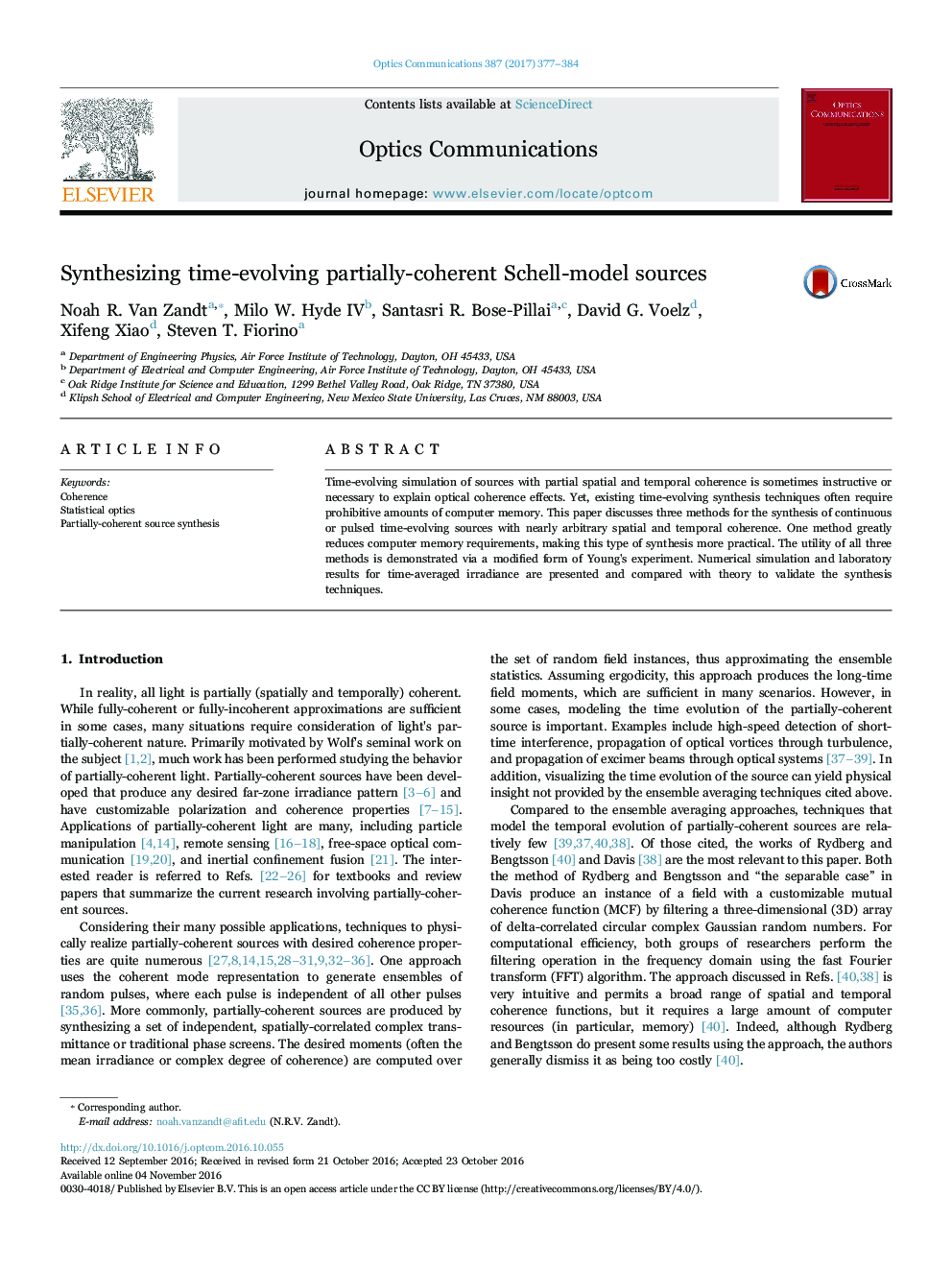| Article ID | Journal | Published Year | Pages | File Type |
|---|---|---|---|---|
| 5449678 | Optics Communications | 2017 | 8 Pages |
Abstract
Time-evolving simulation of sources with partial spatial and temporal coherence is sometimes instructive or necessary to explain optical coherence effects. Yet, existing time-evolving synthesis techniques often require prohibitive amounts of computer memory. This paper discusses three methods for the synthesis of continuous or pulsed time-evolving sources with nearly arbitrary spatial and temporal coherence. One method greatly reduces computer memory requirements, making this type of synthesis more practical. The utility of all three methods is demonstrated via a modified form of Young's experiment. Numerical simulation and laboratory results for time-averaged irradiance are presented and compared with theory to validate the synthesis techniques.
Keywords
Related Topics
Physical Sciences and Engineering
Materials Science
Electronic, Optical and Magnetic Materials
Authors
Noah R. Van Zandt, Milo W. IV, Santasri R. Bose-Pillai, David G. Voelz, Xifeng Xiao, Steven T. Fiorino,
